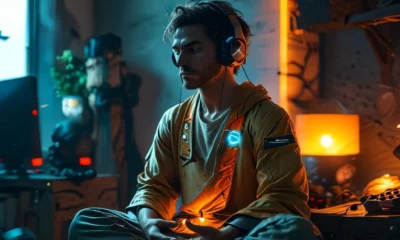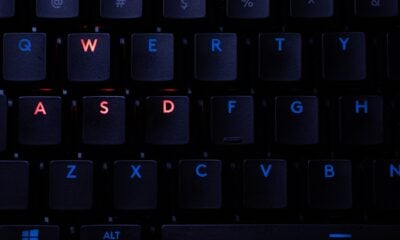Level By Level
‘Ocarina of Time’ Dungeon by Dungeon: Water Temple
In commemoration of Goomba Stomp’s second anniversary staff list champion, our Level-by-Level feature will be diving into The Legend of Zelda: Ocarina of Time, dungeon-by-dungeon. Although Breath of the Wild is utterly superb, its reimagining of the Zelda formula is noticeably lacking classic dungeon design. This continuing series will take a look back at the entry that established the 3D dungeon template, in turn altering dungeon design in ways that would dominate and define the series for nearly twenty years. And since the 2011 3DS remaster makes a wide variety of changes to the original but remains equally masterful, I will be looking at that version alongside the 1998 Nintendo 64 release. In this entry, I will be examining Ocarina of Time’s sixth dungeon, the Water Temple.
After completing the Ice Cavern, the player can use Blue Fire to melt the Red Ice around King Zora for a free Zora Tunic. From there, the player can simply warp to Lake Hylia and enter the Water Temple by shooting the crystal above its entryway with the Hookshot. It’s a brief jaunt from the end of the Ice Cavern to the Water Temple, but the pre-Water Temple prelude lengthens considerably if the Ice Cavern is considered part of it. Either way, the airtight pacing between dungeons feels narratively apropos, as the fate of the Zoras is in Link’s hands.
The Water Temple is the most traditionally palatial dungeon so far, with a sort of neoclassical architecture reminiscent of the Forest Temple but slightly more modernized and not at all dilapidated. This clearcut art style makes the Water Temple the most pristine dungeon so far, fitting given that it seems to undergo a constant wash. And this visual clarity is especially helpful in a dungeon so difficult to navigate. That said, it can feel a bit lacking in character, slightly more generic than the esoteric settings of dungeons past. Indeed, its most memorable moments are arguably when the player steps “outside,” whether in the battle against Dark Link or when following the subterranean river littered with eddies.
In form, the Water Temple is a quadruple-layered Rubik’s Cube with a variable water level. Its distinguishing feature is that the player can change the water level to one of three heights at specific locations around the dungeon, and use each water level to navigate to places inaccessible at other levels. It’s an ingenious concept, but a mixed bag in practice, often leading to loads of infuriating backtracking. Although several additions to the 3DS make navigating the dungeon less of a pain (assigning the Iron Boots the a button instead of having to access them through the main menu, adding Triforce icons to indicate the height the water level will rise, and marking the paths that lead to those Triforce icons), basic navigation is still a major thorn in the player’s side. While consensus in the Zelda community has changed over time, with many believing this dungeon to be secretly one of Ocarina’s best, I personally find it to still be the only point in the game where I consider stopping my playthrough entirely.
The reason for this is how the dungeon’s abstruse layout combined with the meddlesome water level mechanic makes navigation feel like an utter waste of time. Some defend the lugubrious process of changing the water level and moving through water, believing they spur more conscientious traversal where the player is encouraged to think before they act. Although I think this is true to an extent, it feels like so much more of a “stick” than “carrot” approach to level design that straying off-course in the slightest can feel like risking punishment. The funny thing is that the Water Temple is technically the least linear dungeon in the game due to the distribution of its small keys and locked doors, meaning that it can be especially easy to lose one’s way and in turn especially frustrating to course correct. In a less linear space, experimentation should be encouraged, but the cumbersome water level mechanic makes it a slog to find any path forward, let alone carve your own while keeping track of where you have or have not been.
But a couple of quick fixes could have changed this experience entirely. For example, allowing the player to change the water level in more locations, or even just to select the water level they want at any of the three locations could have dramatically cut down on cycling through the same set of rooms to set the water level to the correct height. Or even smaller adjustments, like being able to take notes on the dungeon map on the 3DS’ touch screen or flip a switch instead of having to play Zelda’s Lullaby repeatedly could have saved the player a lot of time. Or even making the dungeon’s regions more visually distinct so the player has a stronger sense of where each path will lead them would help them remember their way. This is all to say that despite the positive changes made to the 3DS version, there is still ample room for improvement.
The Longshot is a fantastic item for combat, puzzles, and traversal, although it is more of a Hookshot upgrade than an entirely new weapon. In fact, the only procedural difference between the Longshot and the Hookshot is its length, which can allow Link to attack or latch on to targets from further away. It is a simple expansion of Hookshot, but it feels like a more potent buff than an item like the Megaton Hammer because it meaningfully impacts traversal throughout Hyrule. And because the Hookshot never got a dungeon of its own, the grappling hook concept finally gets some time to shine, albeit in the dungeon hardest to grapple with.
The Water Dungeon’s two new enemies are Spikes and Shell Blades. Spikes thoughtfully integrate the Hookshot in combat, although it is strange they don’t look more like urchins to fit the water theme. Meanwhile, the Shell Blade’s clam-based design clearly communicates when to attack, and is the only enemy (including the bosses) that seamlessly gels with the water theme. However, not allowing the player to sever the vertical shaft connecting its two halves with a horizontal swipe feels like a missed opportunity to reward deliberate combat. Funnily enough, that very horizontal swipe technique is crucial against the disappointing mini-boss, Dark Link. Although his striking appearance and conceptual coolness leave a lasting impression, Dark Link is ultimately a lackluster hack-and-slashy battle easily won by mindlessly spamming horizontal sword swipes or the Megaton Hammer.
Unfortunately, the dungeon’s boss, Morpha, doesn’t fare much better. A massive aquatic amoeba somehow responsible for draining Lake Hylia and freezing Zora’s Domain, Morpha looks like a budget-rate alien from The Abyss. Most of the fight against Morpha entails pulling its sentient nucleus out with the Longshot while dodging “arms” that can toss the player against the spikes lining the room. Like Dark Link, it probably looks better on paper than it plays, as most of the battle devolves into rotely dodging the same series of slow attacks. Between a repetitious moveset, an arena that doesn’t particularly suit the fight, and a superficial integration of the dungeon’s theme, the fight against Morpha feels like an unfinished prolonged first phase of a multi-phase battle. This rings especially true when comparing it to the great battles of past and future Hookshot/water bosses, such as Arrghus from A Link to the Past and the Deku Toad from Twilight Princess.
Overall, the Water Temple is an ingenious concept that fails in implementation. In a handful of rooms (often those with isolated puzzles or combat scenarios built around water), it momentarily feels like Nintendo succeeded in its lofty aspirations. But tying water level so centrally to navigation throughout the entire experience makes backtracking such a tedious chore, that it taints the entire experience, and arguably sets the low watermark for the entire game. And outside of the flawed but defining water level gimmick, the water theme doesn’t seem integral to almost any other aspect of the dungeon’s design, including the dreary mini-boss and boss fights. Although it is an ambitious evolution of the layered dungeon design featured in A Link to the Past and Link’s Awakening, it is also a rare botch for Ocarina of Time that remains largely unenjoyable in the 3DS version despite several quality of life improvements.
For deep dives into other dungeons from The Legend of Zelda: Ocarina of Time, as well as levels from other classic Nintendo games such as Super Mario Odyssey and Super Mario 64, click here.

-

 Culture4 weeks ago
Culture4 weeks agoMultiplayer Online Gaming Communities Connect Players Across International Borders
-

 Features3 weeks ago
Features3 weeks agoBest Cross-Platform Games for PC, PS5, Xbox, and Switch
-

 Features2 weeks ago
Features2 weeks agoThe End Is Near! Demon Slayer’s Final Arc Trailer Hints at a Battle of Legends
-

 Features5 days ago
Features5 days agoPopular Webtoon Wind Breaker Accused of Plagiarism, Fans Can’t Believe It!
-

 Features4 weeks ago
Features4 weeks ago8 Video Games That Gradually Get Harder
-

 Features3 weeks ago
Features3 weeks agoDon’t Miss This: Tokyo Revengers’ ‘Three Titans’ Arc Is What Fans Have Waited For!
-

 Game Reviews3 weeks ago
Game Reviews3 weeks agoFinal Fantasy VII Rebirth Review: A Worthy Successor?
-

 Guides3 weeks ago
Guides3 weeks agoHow to buy games on Steam without a credit card
-

 Uncategorized4 weeks ago
Uncategorized4 weeks agoSleep Meditation Music: The Key to Unwinding
-

 Technology3 weeks ago
Technology3 weeks ago2025’s Best Gaming Laptops Under $1000 for Smooth Gameplay
-

 Features1 week ago
Features1 week agoThe 9 easiest games of all time
-

 Technology1 week ago
Technology1 week agoThe Rise of Anonymity and No-Account Platforms in Digital Entertainment

























